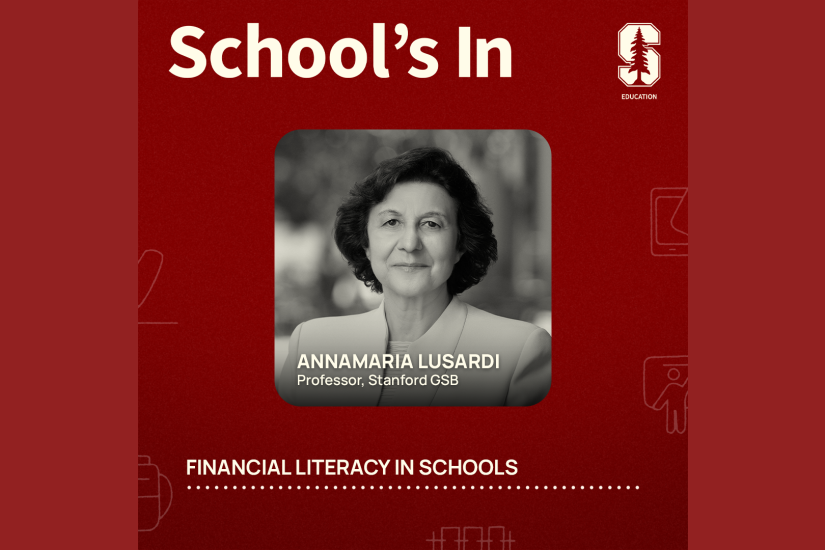
New Stanford study sheds light on how much learning young students have lost during stages of the pandemic
A study by researchers at Stanford Graduate School of Education (GSE) provides new evidence about the pandemic’s impact on learning among students in the earliest grades, showing distinct changes in the growth of basic reading skills during different time periods over the past year.
Results from a reading assessment given to first- through fourth-graders nationwide show that the students’ development of oral reading fluency – the ability to quickly and accurately read aloud – largely stopped in spring 2020 after the abrupt school closures brought on by COVID-19. Gains in these skills were stronger in fall 2020, but not enough to recoup the loss students experienced in the spring.
“It seems that these students, in general, didn’t develop any reading skills during the spring – growth stalled when schooling was interrupted and remained stagnant through the summer,” said Ben Domingue, an assistant professor at Stanford GSE and first author on the study, which was released by Policy Analysis for California Education (PACE), a nonpartisan research network housed at Stanford.
“It picked up in the fall, which is a testament to the work that educators did in preparing for the new school year and their creativity in coming up with ways to teach,” Domingue said. “But that growth was not robust enough to make up for the gaps from the spring.”
Second- and third-graders were most affected, the study found. Overall, students’ reading fluency in second and third grade is now approximately 30 percent behind what would be expected in a typical year.
Reading fluency is fundamental for academic development more broadly, the researchers said, because problems with this skill can interfere with students’ ability to learn other subjects as they make their way through later grades.
“Reading is kind of a gateway to the development of academic skills across all disciplines,” said Domingue. “It’s a key that opens all of the doors. If a kid can’t read effectively by third grade or so, they’re unlikely to be able to access content in their other courses.”
Measuring periodically, not annually

Assistant Professor Ben Domingue
The new study differs from previous research on COVID-19 learning loss in that students’ skills were measured periodically throughout the year, making it possible to assess growth at different stages of the pandemic.
“Most studies on learning loss so far have looked at fall-to-fall changes to show how students have been affected by COVID,” said Domingue. “But just measuring the cumulative effect doesn’t help us understand what was going on between those two time points. There were a lot of changes in what school looked like during different periods between those two points, and it seemed likely there would be some differences in the patterns of learning.”
The study’s focus on students in early elementary grades also distinguishes it from others on learning growth and loss, which typically look at the impact on students in grades 3 through 8 – the ages most often included in annual standardized exams and other routine assessments.
A fundamental skill
The findings were based on data generated by an oral assessment measuring reading fluency in more than 100 school districts nationwide. The reading assessment used in the study takes only a few minutes, and though normally administered in a classroom, it was also conducted remotely during the pandemic. Students were recorded while reading aloud from a device, and their score was based on a combination of human transcription and speech recognition.
The researchers examined trends in the students’ long-run growth back to 2018, observing fairly steady growth until the onset of the pandemic in the spring of 2020. The trajectory flattened at that point and remained flat throughout the summer, indicating that children’s reading abilities had stopped. “It was flat in an absolute sense, not just relative to years past,” said Domingue.
Growth resumed in the fall at levels similar to what the researchers saw before the pandemic. But those gains weren’t enough to make up for the ground lost earlier in the year.
The researchers also observed inequitable impact: Students in historically lower-achieving districts (based on data from the Stanford Education Data Archive) developed reading skills at a slower rate than those in higher-achieving ones. Schools that typically score low on annual standardized tests often serve a greater share of low-income and minority students – populations disproportionately affected by the pandemic in ways that impinge on their readiness to learn, including lack of access to computers, reliable internet access or a parent at home.
“It’s quite likely that lower-achieving schools are dealing with a whole battery of problems that educators in more affluent districts aren’t facing,” said Domingue. “But there was still growth. The teachers were probably moving heaven and earth to help their kids learn to read, and it’s reflected in the gains. But it’s important to recognize the differential impact on students.”
The researchers also found that about 10 percent of students who were tested before the pandemic were not observed in fall 2020. It’s not clear why they were missing, but the researchers suggest that if these students had trouble accessing the assessment remotely, they may be less engaged with school overall and could be falling even further behind than students who were tested.
Next steps
The researchers caution that, while their analysis provides important evidence on learning loss in the early grades, it doesn’t include information about whether students attended school in person, remotely or in some hybrid form.
“We were looking at students in 22 states across the country, and last fall there was tremendous variation in how the students were being educated,” said Domingue. He plans further research exploring differences based on the mode of instructional delivery. “If we can identify patterns in the changes in learning as a function of what particular districts were doing, we may be able to learn from that.”
The researchers also note that their findings should not be applied to other academic subjects, largely because of the focus on reading in the early grades and the likelihood that it was a centerpiece of many schools’ instruction for the fall of 2020. “Given the centrality of reading in the curriculum, I don’t know that we would see the same impact on other skills,” said Domingue.
While the full extent of COVID-19’s impact on learning won’t be clear for months or even years, this study provides evidence that – after the initial shock of the pandemic –educators found ways to teach and assess young students’ reading skills. And even in the midst of continued uncertainty and disruption, these students were able to achieve gains in the fall similar to pre-pandemic times.
“We can build on this research by identifying practices that accelerate learning for students who’ve fallen behind, and by making sure schools have the resources they need,” said Heather Hough, executive director of PACE and coauthor of the study. “These findings are worrisome, but they do not need to be catastrophic.”
Other co-authors on the study include Jason Yeatman, an assistant professor at Stanford GSE and the School of Medicine and David Lang, a GSE doctoral student.
Faculty mentioned in this article: Benjamin Domingue , Jason Yeatman



